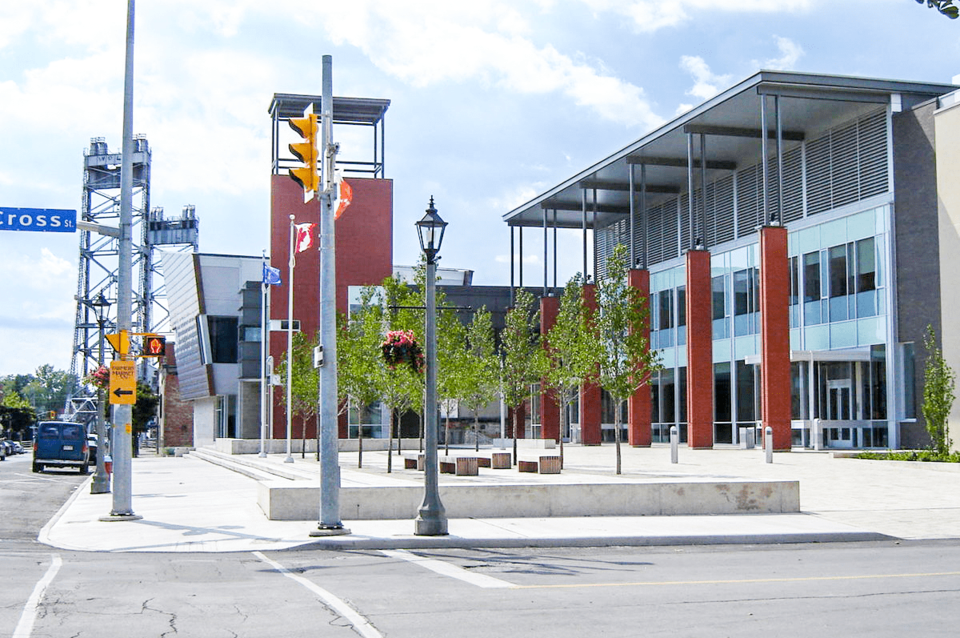It was not a surprise that Welland Council got cold feet last Tuesday night when considering a staff report that recommended reducing the size of council from 12 members to six and the mayor, ahead of the 2026 municipal election.
The move would see half of them out of a job that comes with an annual salary of approximately $28,000, along with the cost of professional development, mileage allowances, pension, benefits and a cell phone. (The mayor, the only full-time member of council, receives approximately $78,000 per year.)
A concern among staff and others supportive of a smaller council is the current number of residents each ward councillor represents: Welland’s elected members have 4,828 constituents on average; compared with 25,357 in Clarington, whose councillors are paid about $10,000 more annually compared to Welland; and 11,802 residents per member in Niagara Falls, where councillors make approximately the same amount as their counterparts in Welland. [Pelham's six Town councillors each represent an average of 3,000 residents, and are paid $22,757 with additional benefits similar to Welland's.]
The report was in response to a Notice of Motion brought forward by Councillor Leo Van Vliet (Ward 2) at the April 9th council meeting, which directed staff “to provide council with options on a reduced council size, with the sole objective to reduce the cost on to the taxpayer.”
In addition to the mayor, Welland currently has two councillors in each of its six wards. Staff have recommended eliminating one councillor per ward, but to also review ward boundaries due to changing population distribution to ensure the new composition provides equitable representation for all residents.
Councillor Tony DiMarco (Ward 4), who previously expressed the need for a review of council’s governance, indicated that he was “shocked” that a recommendation was coming from staff, as opposed to coming from the council members themselves or the electorate. The staff report posited that the seven-person council was the “most optimal solution” because it met the intent of the April motion regarding potential cost savings, and any subsequent ward boundary review could be easily accommodated within the established six-ward structure.
While Councillor DiMarco may have felt council should have recommended a course of action, there was little consensus during Tuesday night’s meeting.
Councillor John Chiocchio (Ward 3) was the first to speak to the report. He said he did not “buy into” a reduced council size. In April, he suggested a halved council would not realize any cost savings, as it would lead to the need for full-time councillors instead.
As a result, a motion was moved Tuesday by Councillor DiMarco, seconded by Councillor Chiocchio that would reconfigure the municipality into eight wards, with one representative per ward. Chiocchio argued that with the municipality possibly reaching a population of 100,000, a reduced council size was not practical.
The future population growth of Welland is subject to debate. The Region forecasts growth to 83,000 residents by 2051, while a consultant’s development charges study for the municipality forecasts almost 130,000 by the same year.
Councillor Graham Speck (Ward 5) was supportive of staff’s recommendation, noting he had heard from constituents who described Welland Council as having “too many cooks in the kitchen”. He took umbrage with the breadth of the staff report regarding a possible ward boundary review, arguing that it went beyond Councillor Van Vliet’s original Notice of Motion.
While Speck was correct that the original Notice of Motion was related to cost savings from the reduction of council, Van Vliet admitted on April 9th that, “the motion isn’t written as clearly as it could have been written. Council needs to look at ward boundaries at the same time.”
Councillor Speck opposed an at-large electoral system, an idea raised by Councillor David McLeod (Ward 2) in April. An at-large system would see all council members representing the entire City as opposed to being responsible for a single ward. Speck argued that Welland’s residents need to know their representatives.
Councillor Adam Moote (Ward 1) described the staff report, which identified council sizes and number of residents-per-councillor of comparable municipalities, as incomplete. He noted that Halton Hills and Brantford were not comparable to Welland, as the former has councillors seated at both upper and lower municipal tiers, while the latter is a single-tier municipality. Staff used the list of comparators to show that Welland is over-represented based on the number of residents each member is responsible for.
Councillor McLeod lamented that council seemed to be engaging in an exercise of “spin the wheel” before landing on an arbitrary number of council members. He felt a more comprehensive approach needed to be undertaken on what adequate municipal representation looked like.
Councillor Bonnie Fokkens (Ward 6) also raised concern about council deciding on a number and “then being stuck with it”. Mayor Frank Campion stressed that whatever council expressed on Tuesday was merely “the beginning of the process” of a governance review.
While various views were expressed, there was consensus among members that before making any changes to the municipality’s governance structure, public input was necessary. Councillor Bryan Green (Ward 4), who indicated he favoured eight wards with eight council members and the mayor, eventually brought a motion to refer the matter back to staff to complete a public engagement process, which effectively killed the motion raised earlier in the meeting moved by Councillor DiMarco.
Staff were confident they could undertake the public engagement process, report back to council and implement any decision by December 31, 2025—the deadline for any council composition or ward boundary changes to be effective for the 2026 municipal election.
Dean Iorfida is a Local Journalism Initiative Reporter based at The Pointer.



